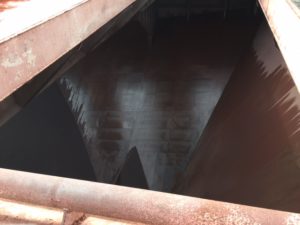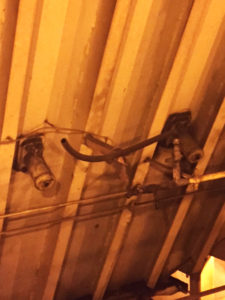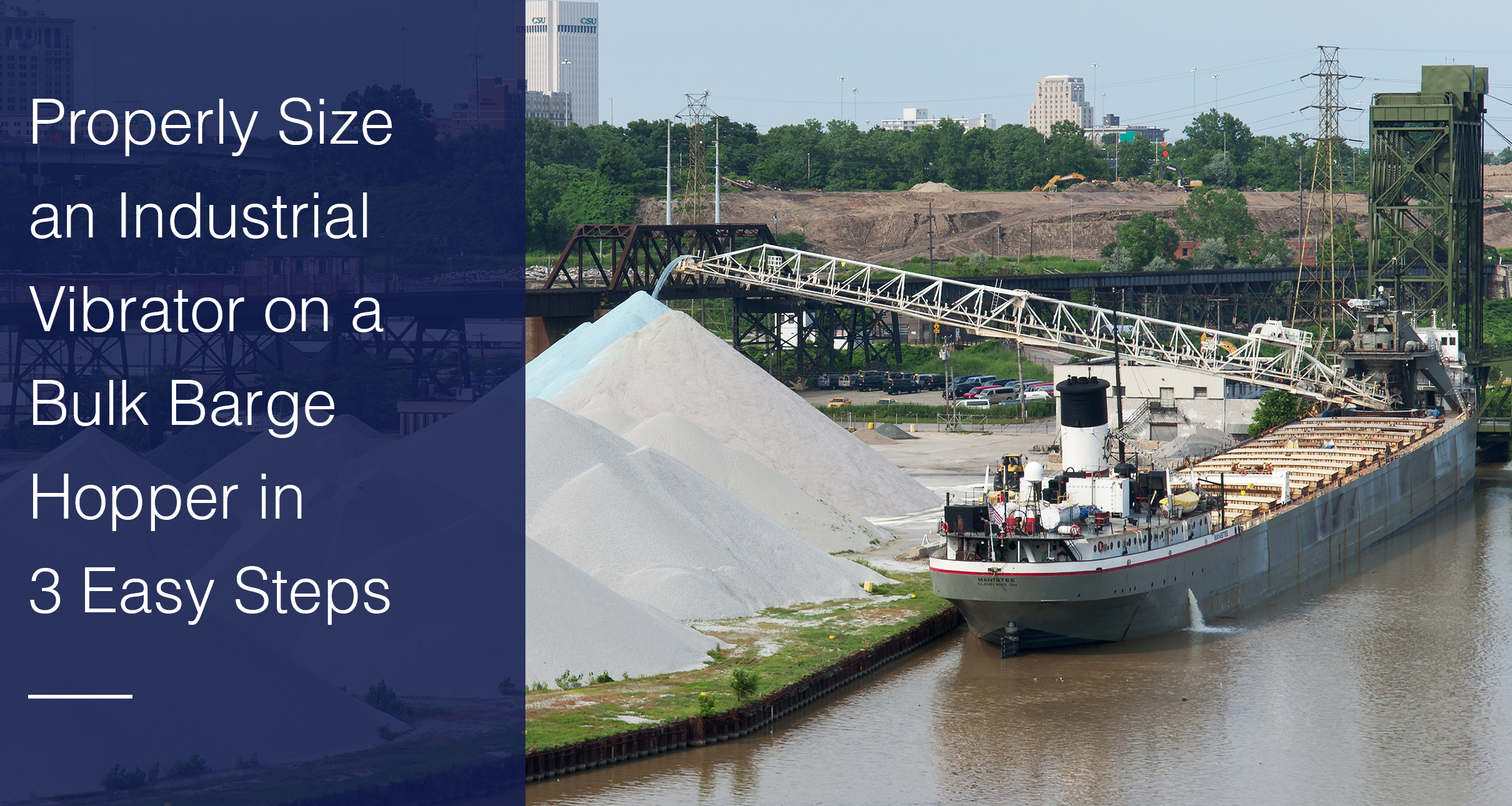When it comes to unloading dry bulk bins, hoppers or vessels, we all know time is money. The more efficiently a job is done, the more time becomes available to take on new projects. More projects, equals… well, you get it.
 One of the options available when it comes to material handling and unloading dry bulk barge hoppers or vessels is vibration. These externally mounted pneumatic or electric devices, when properly sized and installed, appropriately flex the bin or hopper wall to break free rat holing, bridging, caking or sticking material. With the assistance of the Cleveland Vibrator Selection Guide, the vibrator sizing process can be simplified and help increase successful installation.
One of the options available when it comes to material handling and unloading dry bulk barge hoppers or vessels is vibration. These externally mounted pneumatic or electric devices, when properly sized and installed, appropriately flex the bin or hopper wall to break free rat holing, bridging, caking or sticking material. With the assistance of the Cleveland Vibrator Selection Guide, the vibrator sizing process can be simplified and help increase successful installation.
We were able to break it down into three steps:
Step 1: Geometry – to determine number of units. In other words, what are the dimensions of the hopper?
Step 2: Application – used to determine force required. Does your application require a material flow aid to relieve a mostly filled bin of bridging / ratholing material? Or does your application entail a mostly empty bin and in need of a flow aid to achieve a complete clean out?
Step 3: Material, Working Environment – to determine type of unit required – is material sticky, coarse, fine, dry, etc. or dusty with hazardous duty areas
 Let’s walk through an example:
Let’s walk through an example:
Step 1 – Geometry: 20’ x 10’ top, 10’ tall sloped section
Step 2 – Application: Mostly filled bin, 3/8” thick mild steel walls
Step 3 – Material/Working Environment: Iron Ore pellets, 1/4″ diameter, can be wet from outside climate or hosed down
Based on the 20’ x 20’ top, we would suggest more than one vibrator. Having multiple smaller vibrators rather than a single larger vibrator helps limit chances for bin damage. Less chance of damage increases safety and keeps up time running longer with less downtime for repairs.
Because the hoppers are mostly filled, and material is rat holing, we need to look at both the volumetric capacity of the sloped wall section based on dimensions and wall thickness where the vibrators are being installed. Using the formula shown, we are able to determine the amount of material in the sloped section. Weight = 10 x 20 x 10 x (1/3) x 100
Weight = 10 x 20 x 10 x (1/3) x 100
Weight = 66,000 lbs
Divide weight / vibrator factor of 10 –> 66,000 / 10 = 6,600
Divide vibrator force needed / number of vibrators based on dimensions –> 6,600 / 4 = 1650 lbf
 After force per vibrator is known, match that data with the wall thickness chart. As long as the force output per vibrator required matched the wall thickness zone, it is ok to move forward. If the wall thickness is thinner than recommended based on force per vibrator, add a stiffener plate to get to minimum wall thickness. If the wall thickness is thicker than recommended based on force per vibrator, go up a size in vibrator.
After force per vibrator is known, match that data with the wall thickness chart. As long as the force output per vibrator required matched the wall thickness zone, it is ok to move forward. If the wall thickness is thinner than recommended based on force per vibrator, add a stiffener plate to get to minimum wall thickness. If the wall thickness is thicker than recommended based on force per vibrator, go up a size in vibrator.
For this application, the bulk barge had air lines available and noise was not a factor. With that type of working environment, the best overall option is the impacting piston vibrator. After matching the force output required from the vibrator itself (1650 lbf), comparing to wall thickness of area of installation (3/8”) and knowing air powered units were an option, we suggest the 1300 VMS impacting piston vibrator to get the job done.
Do you have a similar application or need help unloading a bulk barge? Contact us today!

Mike joined The Cleveland Vibrator Company team in 2013 with prior experience in manufacturing sales with a Cleveland company in the tool and die industry. Now, he’s the Director of Sales and specializes in “making stuff that shakes stuff”.
When he’s not immersed in the world of industrial vibration, as rare as that might be, Mike keeps busy *not finishing in last place* in Fantasy Football and enjoys spending time with his wife and three kids. It’s always golf season for Mike, and he’s been known to 3 putt his way around any course and can roll tee balls in rain or shine. You can find him tailgating in the Muni Lot before Browns games or supporting local breweries.
As an avid provider of #VibrationEducation, he offers this free bit of advice, “Not all vibration is the same. Force and frequency do matter!” However, there is a 2% upcharge for all Michigan and Steeler’s fans.
Share this blog post:
Follow us:



2 Responses to Properly Size an Industrial Vibrator on a Bulk Barge Hopper in 3 Easy Steps